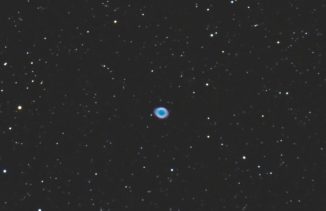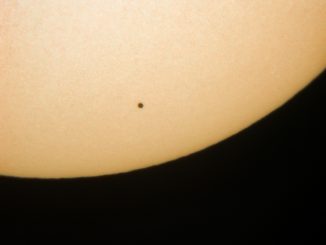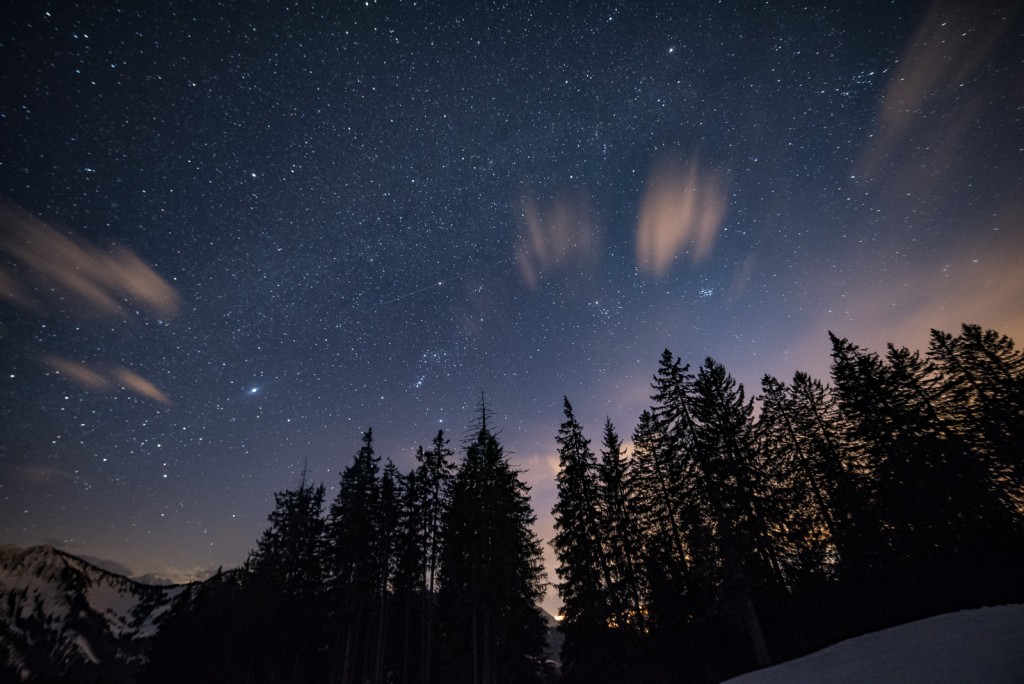At the beginning of the evening, a short session imaging Jupiter, then I switched over to some galaxies.
This is a short animation made from multiple AVI sequences:
At the beginning of the evening, a short session imaging Jupiter, then I switched over to some galaxies.
This is a short animation made from multiple AVI sequences:

In spite of bad seeing and strong gusts of wind I did set up the big refractor to do some astrophotography. I spent quite some time to get things running – in the end the spring galaxies were already too far west in the glare of the train station, so I switched my targets to two globulars and a planetary nebula. Here is a list of what went wrong:
Today I was making sure everything is in working order for Monday’s transit of Mercury across the sun.
I was able to fix the issue of the declination runaway motor of our club’s LXD-650 mount, and took some images using the 127mm refractor with a 1,4x teleconverter.
The last time I wanted to do some deep-sky astrophotography, I ran into an issue with our astronomy club’s LXD-650 mount – immediately after switching it on the declination motor started to run at high speed.
After some research on the internet I was able to resolve the issue, by tweaking the setting on the potentiometer responsible for the declination encoder LED light.

On Monday, 9th of May will be another transit of Mercury across the sun, here are some pictures from May 7th 2003:
Early morning May 7th some amateur astronomers in Vorarlberg packed their gear to observe the Mercury transit from the Bödele above Dornbirn. We had some beautiful weather, and while there were few visitors, TV and Radio came and kept us busy with interviews.
On Easter monday a friend called and asked, if I wanted to join him for a backcountry ski outing to the Nob mountain. It was the last day of service in the Laterns ski resort, so the descent was tough as the slopes were not prepared any more and very icy. With the soft backcountry skis, it was quite rough, and surprisingly loud! But the ascent was very quiet as we walked through the serene dark forests. I took a few quick snaps of the brillant winter sky:

The winter milky way can be seen above Orion. the bright star to the left is Sirius. Nikon D750, ISO 3200, 25s, Samyang 14mm at f/3.5. The elongated haze around Sirius was probably caused by a smudge or fingerprint on the front element of the lens.
When trying to get some nightime skyscape images from a beach on Sanibel Island in Florida, I slowly became aware of a diffuse light brightening the sky behind the clouds. It took me a while to convince myself it was real, but when my eyes adjusted to the darkness I became more and more convinced that it was. At first I couldn’t make sense of it at all – for a moment I was just thinking, it surely isn’t an aurora as it was in the south-west sky.
Only when I reviewed the images on the camera display I realized that this is the zodiacal light. I found this quite amazing, as at the latitude where I live it is only visible in autumn and spring. In Florida which is much closer to the equator it is also visible in winter due to the high angle of the ecliptic with the horizon.
Two-Panel mosaic showing the Zodiacal light and Milky way over the Gulf of Mexico, Image taken on Sanibel Island, Florida, 30s, f/3.5, ISO 3200, Samyang 14mm, Nkon D750
Today I got up at 4:30 to drive up to the Bödele, a nearby mountain pass. Luckily the weather predictions was right and the sky turned out to be very clear.
Again I used the 70-200mm zoom lens at 200mm, the Vixen Polarie was used for tracking.
This morning I grabbed the camera and mount and headed right up to the roof before breakfast. My socks were freezing on the hoarfrost, and it was quite cold in my T-Shirt, but then while the camera was happily snapping away at Comet Catalina I was comfortably eating breakfast.
This is a crop from the original image, 27 individual frames were combined using Andreas Roerig’s software Regim, additional processing was done in Adobe Photoshop and Lightroom.
On December 11th I updated the images, as I found out the de-bayering in Regim was configured wrong, also I applied different settings for gradient removal, resulting in a background with less artefacts, I also included 10 more frames for a total of 27 sub-exposures.
In the inverted version the visible tail is 4,4° long.
On the morning of December 7th Venus and Comet Catalina got close to each other in eastern sky.